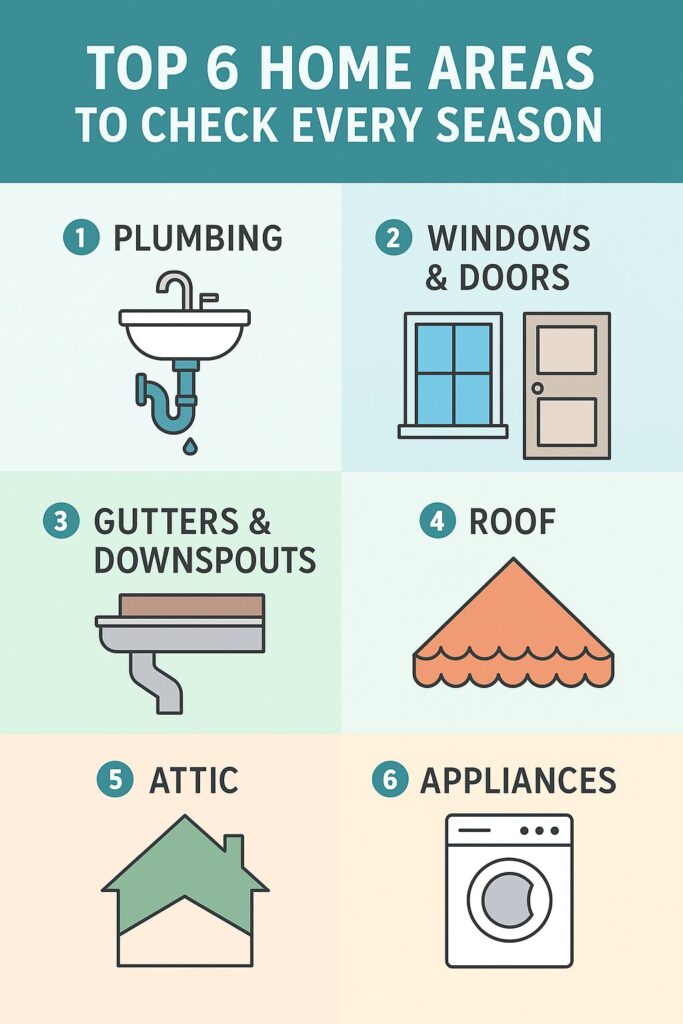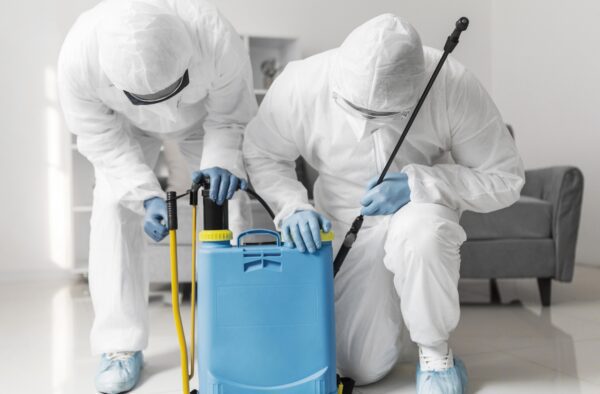
Emergency Drywall Repair, How to Spot and Fix Water Damage
Noticed a soft spot, stain, or bubbling paint on your wall? It might seem small now, but it could be the start of serious drywall water damage.
Water damage to drywall is easy to miss until it becomes a serious issue. In Florida, where heavy rain, humidity, and plumbing problems are common, drywall is one of the first materials to show signs of trouble.
Knowing how to repair drywall from water damage early can save you thousands in repairs. But when the damage is already spreading, you need emergency drywall repair.
In this post, you’ll learn:
- Catch drywall damage early
- Understand what causes it
- Know when it’s time for professional repair
- Prevent future damage in humid, storm-prone areas
Let’s break it down step by step so you know exactly what to look for, what to do, and when to call for help.
Signs of Drywall Water Damage
You don’t need to be a contractor to spot water damage. A quick visual check and a little attention to smell or touch can reveal a lot.
Look for These Common Signs:
| Symptom | What It Looks Like |
| Stains or Discoloration | Brown or yellow patches on walls or ceilings |
| Peeling Paint | Bubbled, flaking, or lifted areas of paint |
| Soft Spots or Sagging | Drywall feels spongy or bows outward |
| Visible Mold | Black, green, or white specks, usually in clusters |
| Musty Odor | Damp smell that doesn’t go away after airing out |
Quick Tip: Press gently on any suspicious area. If it feels soft or crumbly, it’s likely water damaged.
What Causes Drywall Water Damage?
In South Florida, the cause is often weather-related but indoor leaks are just as common. Knowing where the risk comes from can help you stop it early.
Common Sources of Water Damage:
- Leaky plumbing behind walls or under floors
- Roof damage during wind or rain storms
- Overflowing tubs, sinks, or toilets
- Poor sealing around windows, especially after a storm
- Air conditioning condensation in attics or closets
- Flooding from hurricanes or clogged gutters
Even a small, slow drip can lead to serious drywall issues over time especially in Florida’s moist climate.
How to Prevent Drywall Water Damage
The best repair is the one you never need. Simple checks and habits can keep drywall damage from ever happening.
What You Can Do:
- Check plumbing regularly
Look under sinks and around toilets for moisture. - Seal doors and windows
Use silicone caulk to block wind-driven rain. - Keep gutters clean
Overflowing gutters can push water right into your walls. - Inspect your roof
Look for cracked shingles, soft spots, or flashing gaps. - Test your AC drain line
Florida homes rely on cooling — a clogged line can leak for weeks unnoticed. - Install moisture alarms
Affordable and easy to use, these sensors alert you when there’s a hidden leak.

How to Repair Drywall from Water Damage
Knowing how to repair drywall from water damage can save you time, money, and prevent bigger problems down the line. If the damage is caught early before the drywall becomes saturated or mold spreads, you can often take care of minor repairs on your own.
Here’s what to do, step by step:
1. Stop the Leak
Before anything else, fix the source of the water.
Whether it’s a dripping pipe, a roof leak, or condensation from an AC unit, you must stop the leak to prevent more water from reaching the drywall.
- Turn off the main water supply if needed.
- Dry off visible water with towels or a wet/dry vacuum.
- If you’re unsure of the source, call a plumber or water restoration professional.
Tip: Don’t repair drywall until you’re 100% sure the leak has been fixed.
2. Dry the Area Thoroughly
Drywall absorbs moisture quickly, but it dries very slowly.
Use fans and a dehumidifier to remove excess moisture from the room.
- Run fans for at least 24–48 hours.
- Keep windows open if the air outside is dry (not humid).
- For best results, aim air at both sides of the wall (inside and out, if possible).
Warning: Skipping this step can lead to hidden mold behind the wall later.
3. Cut Out the Damaged Drywall
Once the leak is stopped and the area is dry, it’s time to remove the affected drywall. This is one of the most important steps in any emergency drywall repair process, as damaged or mold-prone drywall can’t be salvaged.
- Look for drywall that is soft, sagging, stained, or crumbling.
- Cut a clean, rectangular section around the damage. This makes patching easier.
- Remove any wet insulation or vapor barriers behind the wall.
4. Check Inside the Wall
Once the drywall is open, inspect the space behind it:
- Is the wood framing wet or moldy?
- Is insulation damp or discolored?
- Are there signs of pests or mildew?
Remove and replace anything that looks compromised. Let the area completely dry out before you move to the next step.
5. Install New Drywall
Once everything is dry and clean:
- Cut a new piece of drywall to fit the hole.
- Screw it into place, attaching it to the wall studs.
- Use joint tape over the seams and apply joint compound (mud).
- Smooth out the surface and let it dry completely.
- Sand lightly for a clean finish.
Tip: Buy drywall rated for moisture or mold resistance if you’re working near a bathroom, laundry room, or kitchen.
6. Prime and Repaint
Never paint bare drywall—especially after water damage.
- First, apply a mold-resistant primer. This seals the area and prevents future growth.
- Then repaint using high-quality interior paint that resists moisture.
When to Call for Emergency Drywall Repair:
- Walls are sagging or falling apart
- You see dark spots or fuzzy mold growth
- There’s a strong odor that doesn’t go away
- The damage was caused by a flood or roof leak
- It’s been more than 24 hours since the drywall got wet
Mold on Drywall: What to Watch For & Why It Matters
Mold is one of the most common outcomes of water-damaged drywall especially in humid areas like Florida. If drywall stays wet for more than a day or two, water damage mold on drywall can begin to form behind the surface, even if you don’t see it right away.
It doesn’t just affect your walls, it can affect your air, your health, and your home’s structure.
What Mold on Drywall Looks Like
| Visible Clues | What to Look For |
| Dark spotting | Black, green, or gray dots or patches that spread over time |
| Stains or blotches | Yellow, brown, or darker marks, especially near baseboards |
| Peeling paint | Paint bubbling, cracking, or pulling away from the wall |
| Soft texture | The wall feels spongy or crumbly to the touch |
| Musty odor | Persistent damp, earthy smell in a specific room |
These signs are often overlooked, but ignoring them can lead to a larger, hidden mold problem within the wall cavity or insulation.
Why Mold on Drywall Shouldn’t Be Ignored
Mold thrives in damp, enclosed spaces—like behind drywall panels exposed to water damage. The longer it stays untreated, the more it spreads and the harder it is to remove. And since drywall is porous, you can’t just clean the surface.
Instead, the damaged drywall usually needs to be cut out, properly discarded, and replaced.
In homes with repeated moisture exposure, mold remediation services are often necessary to ensure the problem is fully contained and doesn’t return. These services include inspection, controlled removal, drying, and sanitation of all affected areas especially where mold has penetrated deep into wall materials.
What You Should Do Immediately
If you’ve noticed signs of mold on drywall after a leak, flood, or storm:
- Stop the source of moisture as soon as possible.
- Avoid disturbing the wall surface—scraping or cleaning mold without containment spreads spores.
- Ventilate the space, but avoid strong airflow directly onto mold.
- Document the damage in case repairs or professional help are needed.
If the mold is larger than a few inches in diameter or appears in more than one area, it’s time to consult mold remediation services to assess the situation safely and thoroughly.
When Emergency Drywall Repair Is Needed
In many cases, water damage and mold go hand-in-hand. If your drywall is soft, discolored, or moldy, emergency drywall repair may be the fastest and safest solution—especially if structural components behind the wall have been affected by moisture or mold growth.
Fast action prevents:
- Mold spreading to adjacent rooms
- Deeper damage to insulation, studs, or subflooring
- Exposure to airborne mold spores that affect health
How ASAP Restoration Helps
When time matters, we move fast. We’re a licensed, insured restoration team with years of experience handling water damage restoration and drywall emergencies in Florida homes.
We work around your schedule and respond 24/7 to emergency calls. Every job is handled by trained techs who know Florida homes inside and out.



